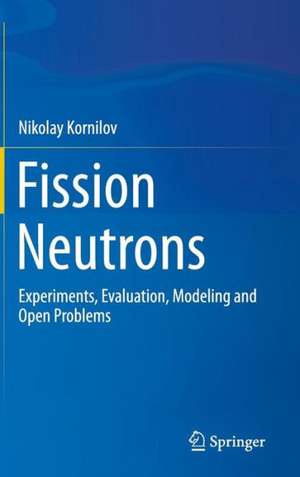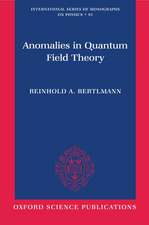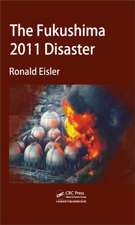Fission Neutrons: Experiments, Evaluation, Modeling and Open Problems
Autor Nikolay Korniloven Limba Engleză Hardback – 6 aug 2014
| Toate formatele și edițiile | Preț | Express |
|---|---|---|
| Paperback (1) | 632.70 lei 6-8 săpt. | |
| Springer International Publishing – 21 sep 2016 | 632.70 lei 6-8 săpt. | |
| Hardback (1) | 638.89 lei 6-8 săpt. | |
| Springer International Publishing – 6 aug 2014 | 638.89 lei 6-8 săpt. |
Preț: 638.89 lei
Preț vechi: 751.64 lei
-15% Nou
Puncte Express: 958
Preț estimativ în valută:
122.26€ • 130.73$ • 101.93£
122.26€ • 130.73$ • 101.93£
Carte tipărită la comandă
Livrare economică 18 aprilie-02 mai
Preluare comenzi: 021 569.72.76
Specificații
ISBN-13: 9783319071329
ISBN-10: 3319071327
Pagini: 160
Ilustrații: VI, 132 p. 85 illus., 35 illus. in color.
Dimensiuni: 155 x 235 x 18 mm
Greutate: 0.38 kg
Ediția:2015
Editura: Springer International Publishing
Colecția Springer
Locul publicării:Cham, Switzerland
ISBN-10: 3319071327
Pagini: 160
Ilustrații: VI, 132 p. 85 illus., 35 illus. in color.
Dimensiuni: 155 x 235 x 18 mm
Greutate: 0.38 kg
Ediția:2015
Editura: Springer International Publishing
Colecția Springer
Locul publicării:Cham, Switzerland
Public țintă
ResearchCuprins
Introduction.- Experiments.- 2. Microscopic experiments.- Method based on fission event counting.- Neutron spectroscopy by Time of Flight Method (TOF).- Time correlated background.- Time shift in neutron detector.- Neutron-gamma discrimination and its influence on results.- Measurement of the neutron detector efficiency.- Time resolution and “bin” corrections.- Additional time spread for “solid sample” experiment at low input energy.- Possible distortion factors in 2nd type experiment.- The calculation of the detector efficiency with high accuracy up to 20MeV.- Correction for neutron scattering in FF detector.- Multi detectors systems and “cross talk correction”.- Macroscopic experiments.- 3. Microscopic spectra evaluation. Semi-empirical modeling.- Maxwellian function and Terrell’s systematic.- 252Cf spectrum evaluation.- Two Watt Spectra (TWS) approach.- Maxwellian together with power expansion for 235U(th).- Scale Method.- PFNS for multiple chance fission.- 4. Models for neutron emission in fission.- Basis for theoretical modeling.- True or plausible results?.- Model realized in code FINE (FIssion Neutron Emission).- Estimation of the two-dimensional Y(A,TKE) distribution.- Neutron emission from excited fragments.- Monte Carlo simulation of energy-angular distribution. Verification.- Level Density verification.- Comparison experimental and calculated results.- 5. Achievements and still open problems.- Real achievements.- Mechanism of neutron emission in fission.- Left-right and angular effects for fission neutron emission at 0.5 MeV input energy.- Contradiction between Microscopic and Macroscopic experiments (Mic-Mac problem).- New experimental proposal.
Notă biografică
Born in the Republic of Russia, the author now resides in the USA resident since 2011. He obtained his PhD and Doctorate of Science in Physics and Mathematics at the Moscow Physical Engineering Institute. His professional experience includes research at the Institute for Physics and Power Engineering (IPPE, Obninsk, Russia) and as a visiting scientist at IRMM-JRC. Currently he works as a researcher in Department of Physics and Astrophysics of Ohio University, where he began working in 2009. He also has held numerous visiting positions with the IAEA and is the author of over 150 publications.
Textul de pe ultima copertă
Although the fission of heavy nuclei was discovered over 75 years ago, many problems and questions still remain to be addressed and answered. The reader will be presented with an old, but persistent problem of this field: The contradiction between Prompt Fission Neutron (PFN) spectra measured with differential (microscopic) experiments and integral (macroscopic and benchmark) experiments (the Micro-Macro problem). The difference in average energy is rather small ~3% but it is stable and we cannot explain the difference due to experimental uncertainties. Can we measure the PFN spectrum with high accuracy? How may we compare results of different experiments to provide better accuracy? Are our traditional theoretical models correct? What can be done to solve the Micro-Macro problem in future? These questions are discussed in this monograph for the reader. The current work will be of interest to graduate students and researchers, particularly those working in nuclear and neutron physics.
Caracteristici
Examines an old problem (over 50 years) which still lacks an explanation and has never been adequately discussed in detail before now Provides methods for precise measurements of neutron spectra, methods of data evaluation and traditional theoretical models are collected and discussed Provides the conclusion that the traditional theoretical model cannot describe the available experimental data Offers a new suggestion for the explaining contradictory microscopic and macroscopic data Includes supplementary material: sn.pub/extras












